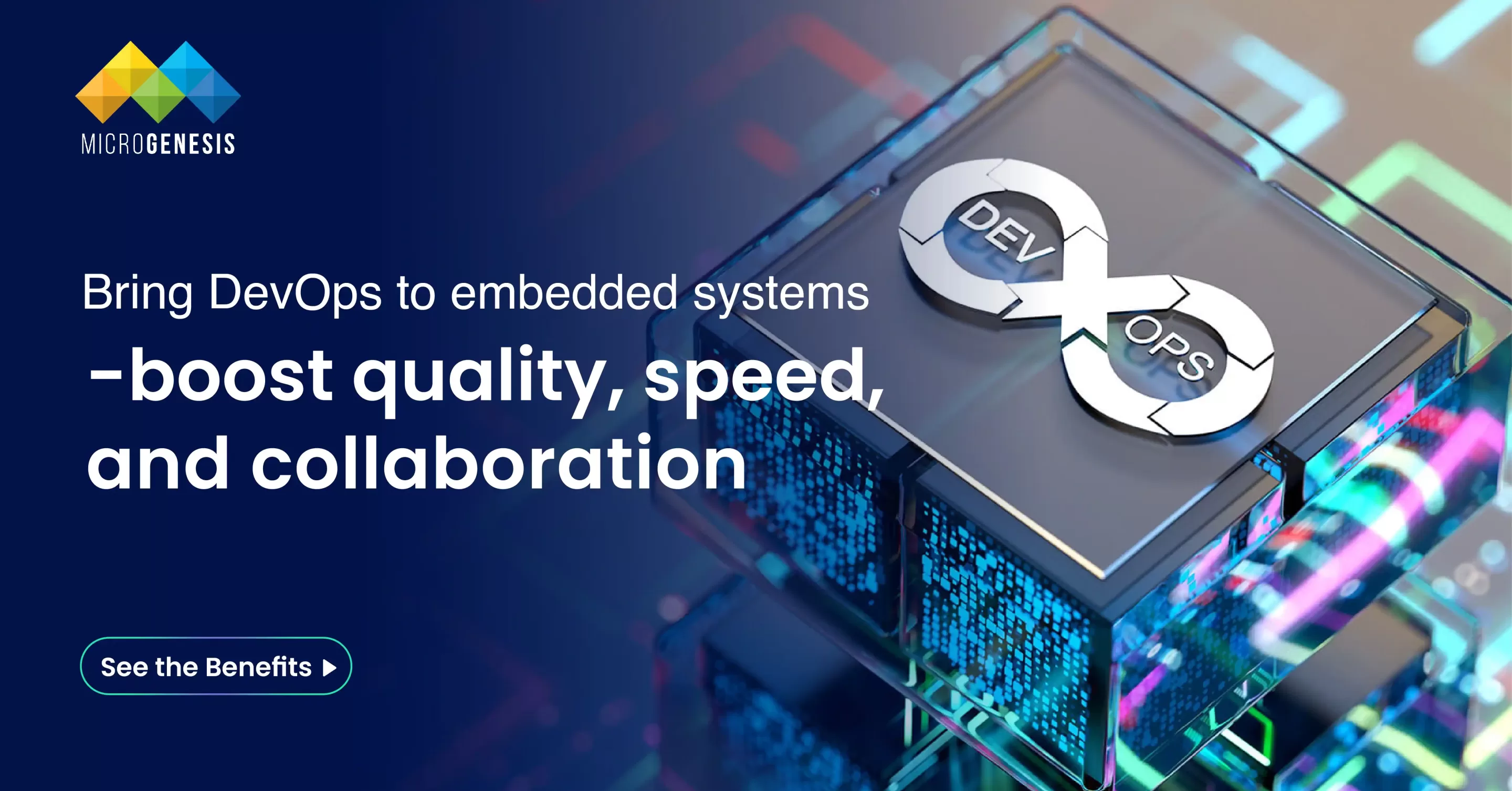The world of software development has been transformed by DevOps—a culture, set of practices, and toolset designed to unify development and operations for faster, more reliable delivery. But DevOps isn’t just for cloud-based or enterprise applications. Increasingly, it’s making its way into embedded systems—software that runs on dedicated hardware with specific, often critical, functions.
This evolution is called Embedded DevOps. It merges the agility of modern software practices with the unique demands of embedded development. The result is a development approach that enables faster delivery, higher quality, and easier maintenance for devices ranging from IoT sensors and automotive systems to medical equipment and industrial controllers.
2. What is Embedded DevOps?
Embedded DevOps is the adaptation of DevOps principles to the development, testing, deployment, and maintenance of embedded systems—systems where hardware and software are tightly coupled.
An embedded system could be:
- A microcontroller-based sensor node in a smart home.
- A real-time controller in an aircraft.
- A Linux-based infotainment system in a car.
- A medical infusion pump with firmware controlling dosage.
Unlike conventional software applications, embedded systems face constraints such as limited memory, specialized processors, strict power budgets, and real-time operating requirements.
Embedded DevOps takes the core ideas of DevOps—continuous integration, continuous delivery, automation, collaboration, and feedback loops—and applies them to this hardware-constrained world. By leveraging the right DevOps services, organizations can adapt these practices to embedded systems, accelerating delivery while maintaining reliability and quality.
3. How Embedded DevOps Differs from Traditional DevOps
While the philosophy is the same, the environment is very different:
| Traditional DevOps | Embedded DevOps |
| Runs on virtual servers or cloud infrastructure | Runs on physical devices and dedicated hardware |
| Testing in virtualized environments | Testing often requires real hardware |
| Deployment is instant over the internet | Deployment may require firmware flashing or secure OTA updates |
| Few hardware constraints | Tight memory, CPU, and energy constraints |
| Less regulatory oversight | Often subject to strict safety and compliance standards |
These differences mean that Embedded DevOps requires additional tooling, processes, and collaboration between hardware and software teams.
4. Benefits of Embedded DevOps
4.1 Faster Time-to-Market
Traditionally, embedded projects involve long lead times. Hardware design, firmware coding, and integration testing often happen in separate phases, each dependent on the previous stage’s completion. If a late-stage bug is discovered, it can delay the release by months. With the right DevOps consulting, organizations can break down silos, adopt continuous practices, and significantly reduce time-to-market for embedded projects.
Embedded DevOps compresses these timelines by enabling:
- Incremental development: Teams can work on smaller firmware features and deliver them in short cycles instead of waiting for the entire system to be ready.
- Parallel work: With hardware simulation and emulation, firmware can be developed before final hardware is ready.
- Automated builds: Continuous integration servers compile firmware immediately after code changes, eliminating wait times for manual build setups.
Example:
An IoT thermostat manufacturer previously needed 9–12 months for a major firmware release. After implementing Embedded DevOps with automated hardware test rigs and CI pipelines, they were able to release feature updates every 4–6 weeks—allowing them to respond quickly to market feedback.
4.2 Higher Quality
In embedded systems, late-discovered defects can be extremely costly—not just in money but in brand reputation and regulatory compliance.
Embedded DevOps improves quality through:
- Continuous Testing: Automated unit tests validate code logic immediately, while hardware-in-the-loop (HIL) testing catches integration issues between firmware and physical components.
- Regression Prevention: Pipelines automatically run full test suites whenever a change is made, ensuring new features don’t break existing functionality.
- Field Feedback Loops: Devices deployed in the field can send telemetry data back to the development team, highlighting anomalies that might indicate emerging issues.
Example:
An automotive supplier used to rely on manual bench testing for ECU firmware. After adopting Embedded DevOps, they implemented automated test benches with robotic actuators and sensors. This increased test coverage by 70% and reduced post-production defects by nearly half.
4.3 Streamlined Collaboration
Embedded projects often suffer from a hardware/software divide. Hardware engineers may be focused on PCB layouts and sensor integration, while firmware developers work in code repositories, and QA teams operate separately.
Embedded DevOps bridges this gap by:
- Shared Repositories: All design files, firmware code, and test scripts are stored in a version-controlled system accessible to all stakeholders.
- Unified Toolchains: Issue trackers, CI pipelines, and test reports are shared between hardware, firmware, and QA teams.
- Transparent Workflows: Automated build and test results are visible in real time, so everyone knows the system’s current state.
Example:
A medical device company adopted GitLab CI for both PCB schematics and firmware source code. The shared repository meant that when a hardware change required a firmware adjustment, the relevant developers were notified automatically—cutting integration delays by weeks.
4.4 Easier Maintenance
One of the biggest historical pain points for embedded products is post-deployment updates. Without remote update capability, fixing bugs or adding features often required physical recalls or on-site service.
Embedded DevOps addresses this with:
- Over-the-Air (OTA) Updates: Secure, automated update systems allow devices to receive firmware patches without physical access.
- Rollback Mechanisms: If an update fails or causes problems, the device can revert to a previous stable version automatically.
- Update Scheduling: Devices can be updated in waves, minimizing disruption and allowing early detection of potential issues.
Example:
A network equipment manufacturer implemented OTA updates through their DevOps pipeline. This allowed them to patch a security vulnerability in 100,000 deployed routers in under 48 hours—without a single device bricking.
4.5 Improved Security
Connected embedded devices are increasingly attractive targets for cyberattacks. A vulnerability in one device can compromise entire networks.
Embedded DevOps improves security posture by:
- Rapid Patch Deployment: Vulnerabilities can be fixed and rolled out to devices quickly.
- Security Testing in CI: Automated static code analysis, dependency scanning, and penetration testing tools can be integrated into the build pipeline.
- Cryptographic Signing: Firmware binaries can be signed during the build process, and devices can verify signatures before applying updates.
- Secure Config Management: Infrastructure-as-Code principles can extend to firmware configuration, ensuring secure, version-controlled settings.
Example:
An industrial control system provider integrated static analysis tools like SonarQube into their CI pipeline. Combined with signed OTA updates, this reduced their vulnerability remediation time from 3 months to 2 weeks.
4.6 Better Compliance and Traceability
Many embedded products operate in regulated industries—aerospace, automotive, medical, and industrial sectors all have strict compliance standards. These require:
- Detailed documentation of requirements, design, and test results.
- Traceability between requirements, code changes, and test verification.
- Proof that every release meets specified safety and performance criteria.
Embedded DevOps makes this easier by:
- Automated Traceability Links: Requirements management tools can integrate with version control and CI to automatically link requirements to specific commits, builds, and test results.
- Continuous Compliance Evidence: Every build generates a full record of tests, results, and artifacts for audit purposes.
- Consistent Process Enforcement: Pipelines can block releases that don’t meet compliance criteria.
Dig Deeper:
Example:
A medical device firm building insulin pumps implemented a CI/CD pipeline that automatically linked test results to FDA-required documentation. This cut their audit preparation time from months to weeks and reduced human error in compliance reports.
5. Making Embedded DevOps Work
Adopting Embedded DevOps effectively means addressing its challenges with deliberate strategies:
- Automated Test Farms – Device racks with automated flashing, power cycling, and monitoring to increase testing throughput.
- Hybrid Testing – Use simulators for early validation and real hardware for final verification.
- Secure OTA Updates – Include encryption, authentication, and rollback capabilities to reduce deployment risk.
- Integrated Toolchains – Choose tools that bridge hardware and software workflows, enabling shared repositories, unified issue tracking, and artifact management.
- Compliance Automation – Generate compliance evidence directly from CI/CD pipelines.
- Cross-Functional Teams – Organize teams around products rather than disciplines to encourage ownership of the entire lifecycle.
6. Conclusion
Embedded DevOps brings the speed, reliability, and collaborative culture of DevOps into the hardware-constrained, safety-conscious world of embedded systems.
Its benefits—faster time-to-market, better quality, improved security, easier maintenance, and stronger collaboration—can transform how organizations develop and maintain their embedded products.
However, it comes with challenges—hardware dependency, tooling gaps, deployment risks, simulation limits, compliance overhead, and cultural resistance—that require thoughtful strategies to overcome.
As more devices become connected, intelligent, and software-driven, the ability to deliver embedded software quickly and reliably will be a competitive differentiator. Embedded DevOps offers the framework to make that possible. As a best IT company, MicroGenesis provides specialized embedded DevOps services to help enterprises streamline development, reduce risks, and accelerate delivery with confidence.




